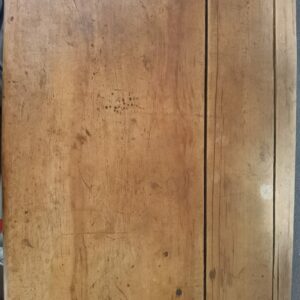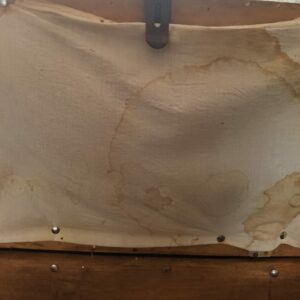I have a yellow wood kist that dates from somewhere in the 1800’s that I inherited from my grandfather.
It is a family heirloom that has been passed down from generation to generation.
I have a few questions regarding restoration of the item.
The kist has some water stain and other stains on top of the lid. It also has 2 horizontal cracks on the lid from left to right side. Inside the lid there is a linen cloth that has several stains and dirty.
1. How do I remove the water stain without damaging the wood?
2. How do I restore the kist and make it look good again without it losing any value?
3. How do I clean the linen cloth?
4. After restoration how to I keep it in good condition? Do I use something like beeswax?
I did approach someone who restores furniture but when he told me how he will restore it I immediately declined his offer. He was going to sand it down and varnish it.
To me varnishing any antique is a big NO.
I would really appreciate any advise. I’m from South Africa.

















Replies
“[Deleted]”
For those who are curious, kist is , I think, old English or Scottish for " chest" or more specifically a chest for storing clothing. Is you " kist" English or Scottish? Is it made of hardwood or softwood? The photo appears to me as possibly some type of pine. Your in South Africa so products that we have may not be available to you. Water marks on wood I have tried many different ways and chemicals and have had the most success by using Murpheys Oil Soap in hot water and rub like hell with white terrycloth toweling. It works particularly well on soft woods. The linen if it were mine I would take it to a laundry and have it professionally cleaned ,hopefully by someone that understands what you are doing. Talk to the antique dealer, maybe he knows who. I would be afraid to take it on myself for fear that i might end up with a ball of thread. Old cloth can turn to dust if not done correctly.
As far as finish goes, that depends on what it was finished with in the first place. Your restoring an antique so restoring means staying as true as possible to the original. If there is no detectable finish I would think that it is likely to have once been oiled. From photos it would be difficult to determine what the original finish might be or rather might have been. Varnishes and shellac would have been available when it was made. However any finishing/ refinishing, even oil, will take away at least some of its ancient character and unless not doing a finish is irresponsible for the piece then maybe just a good cleaning. As to cleaning, I find naphtha to be the best cleaner . It is not reactive to old finishes and is safe to use. At least to the finish, you however ,who knows! I have never found a finish where naphtha damaged the finish but still I always test in an inconspicuous place incase there is a first time.
The cracks, do they go through? If so, then they are cracks as opposed to surface checking. Cracks should be repaired and I would think that hide glue worked into the crack and clamped would work and be appropriate. Checking- maybe just leave if they appear stable.